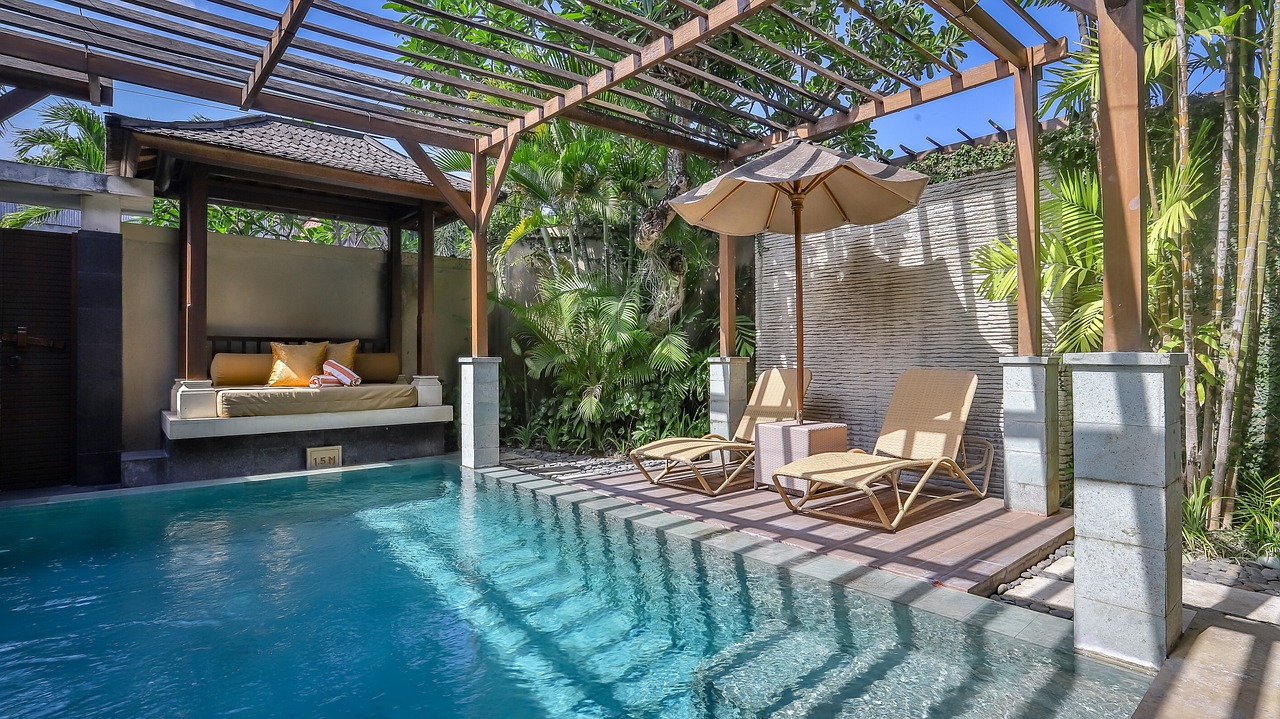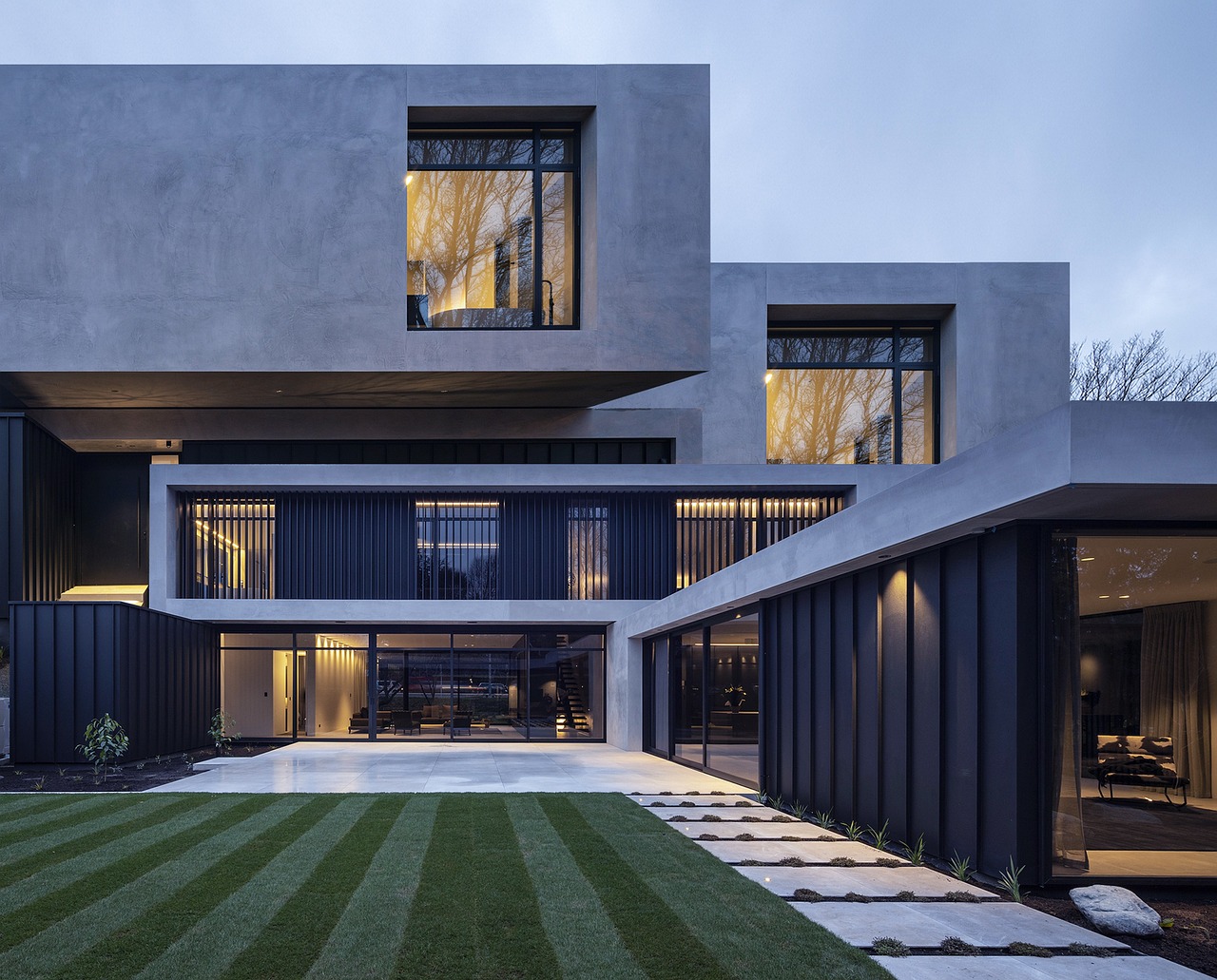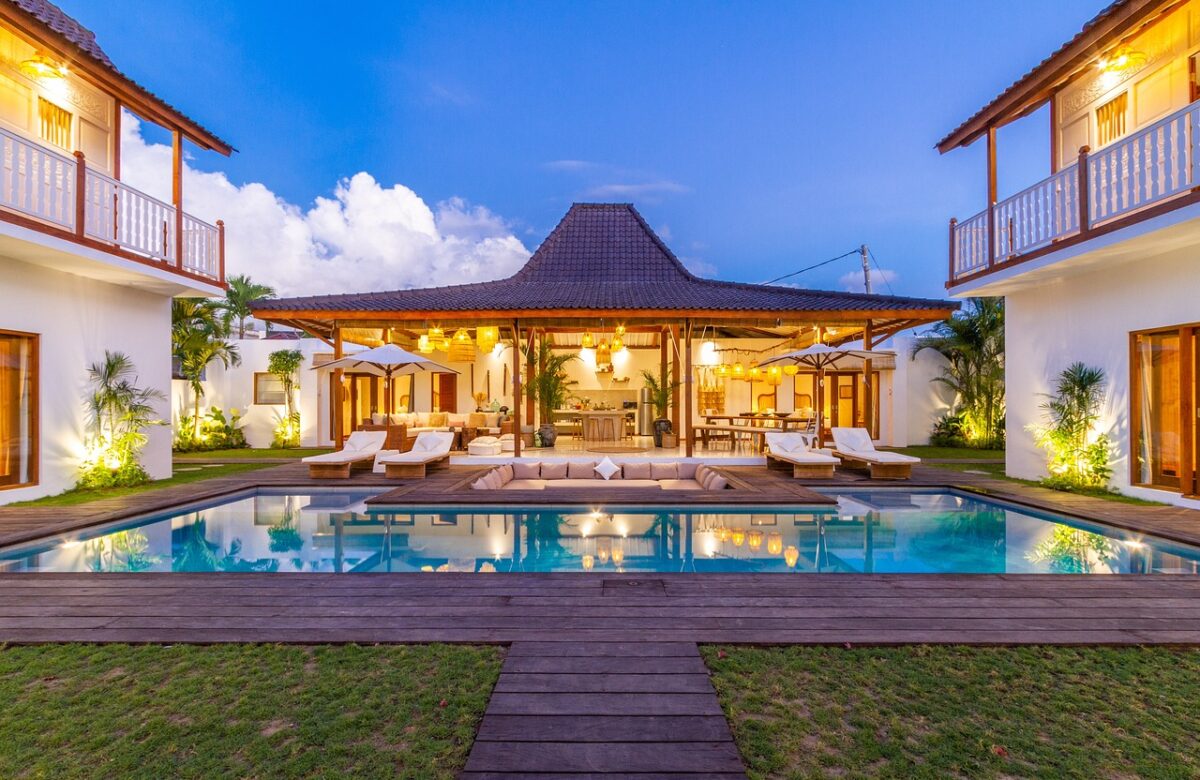
Uniting Residential Architecture with Nature
By Studio 35 | Dayana Hamd
Residential architecture is more than just walls, windows, and roofs. It is a living experience, one that combines structure, functionality, and beauty into a harmonious whole. While the building itself often takes center stage, the role of landscape design in creating this harmony cannot be understated. Landscape design breathes life into residential architecture, serving as a bridge between the built environment and the natural world. At Studio 35, we understand the profound importance of landscape design in elevating residential spaces, transforming them into havens of comfort, connection, and visual delight.
In this blog, we delve into the role of landscape design, exploring why it is essential in residential architecture and how it brings spaces together to create holistic living experiences.
Many people perceive landscape design as merely decorative—a touch of greenery, flowerbeds, or stone pathways. However, landscape design is far more significant than aesthetics alone. It is about creating spaces that enhance well-being, promote sustainability, and bring a sense of balance between a home and its surroundings.
When thoughtfully designed, landscapes extend living spaces beyond the home’s walls. Outdoor patios, gardens, terraces, and courtyards become integral parts of daily life, blurring the lines between interior and exterior. Whether it’s a serene garden for quiet reflection, a pool deck for entertaining guests, or a children’s play area, landscape design shapes the way we live and interact with our environment.
In residential projects, landscape design can:
Enhance functionality by providing usable outdoor spaces.
Improve air quality and reduce heat through greenery and shading.
Create seamless transitions between indoor and outdoor areas.
Increase property value by adding unique, visually appealing features.
At Studio 35, we believe that a home’s landscape should not feel separate or secondary to its architecture. Instead, the two should work together to create a cohesive and immersive environment.
In today’s fast-paced urban environments, our connection to nature is increasingly diminished. Yet, numerous studies have shown that incorporating natural elements into residential spaces has profound benefits for physical and mental health. A well-designed landscape can reintroduce this vital connection to nature, improving the quality of life for the home’s occupants.
Consider the Japanese concept of biophilia or the love for nature. This philosophy underpins many successful residential landscapes, where elements like plants, water features, and natural materials are used to evoke calm and relaxation. A garden with native plants, a shaded pergola surrounded by greenery, or the sound of a gentle fountain can create spaces of tranquility and mindfulness.
The integration of nature into residential spaces is particularly important in regions like the Arab World, where extreme heat can often discourage outdoor living. Thoughtful landscape design can mitigate this challenge through features like:
Shaded pathways and seating areas to encourage outdoor use.
Courtyards with cooling water features or green walls.
Drought-resistant plants that add beauty without excessive water consumption.
Through intelligent design, even the harshest climates can be transformed into lush, livable landscapes that complement the architecture and nurture the soul.

3. Landscape as a Unifying Element
A well-designed landscape serves as a unifying element that ties together the various parts of residential architecture. Whether it’s a sprawling villa, a compact urban home, or a multi-story apartment, landscape design has the power to bring coherence and flow to the space.
At Studio 35, we approach landscape design as an extension of the home’s architecture. The choice of plants, pathways, textures, and materials should reflect the architectural style and personality of the home. For example:
Modern Homes: Clean lines, minimalistic gardens, and geometric features complement contemporary architecture.
Traditional Homes: Natural materials, lush greenery, and elements like arches and courtyards echo cultural and historical influences.
Mediterranean Villas: Olive trees, terracotta pathways, and water features bring a timeless charm.
The landscape also bridges indoor and outdoor spaces. Features such as sliding glass doors, terraces, and indoor courtyards allow residents to move effortlessly between environments, creating a sense of openness and unity. In essence, landscape design becomes the glue that binds a home’s architecture to its natural surroundings, achieving a seamless visual and functional flow.
In recent years, there has been a growing emphasis on sustainability in architecture, and landscape design plays a crucial role in achieving eco-friendly homes. By integrating sustainable elements into the landscape, architects and designers can reduce the home’s environmental footprint while creating a beautiful, livable environment.
Some key elements of sustainable landscape design include:
Native Plants: Choosing local plants that thrive naturally in the region reduces the need for excessive watering and maintenance.
Water Management: Incorporating water features, rainwater harvesting systems, and efficient irrigation minimizes water waste.
Shading and Cooling: Trees, pergolas, and green roofs provide natural shade, reducing energy consumption for cooling interiors.
Materials: Using recycled or locally sourced materials for pathways, walls, and furniture contributes to sustainability.
Sustainability is not just about protecting the environment; it is also about creating homes that are in harmony with their natural surroundings. At Studio 35, we are passionate about designing landscapes that respect the earth while enhancing the beauty and function of residential spaces.
The ultimate goal of landscape design is to enhance the homeowner’s lifestyle and elevate the living experience. Landscapes are not just about beauty; they are about creating opportunities for connection, relaxation, and joy.
Imagine starting your day with a cup of coffee on a sun-dappled patio, surrounded by fragrant plants and the sound of birds. Picture evenings spent hosting friends in a garden illuminated with warm lights, or children laughing as they explore a backyard filled with hidden nooks and playful features. Landscape design transforms these scenarios from ideas into everyday realities.
From wellness gardens to outdoor dining spaces, from water features to cozy fire pits, landscapes can be tailored to reflect the unique needs and personalities of the homeowners. At Studio 35, we take the time to understand how our clients live, what inspires them, and what they dream of when it comes to their outdoor spaces.
Landscape design is an integral part of residential architecture—one that transforms houses into homes and spaces into sanctuaries. It is about creating an experience, a flow, and a relationship between the built and natural worlds. The power of landscape design lies in its ability to elevate aesthetics, improve functionality, and promote well-being, all while unifying the architectural vision.
At Studio 35 by Dayana Hamd, we are passionate about creating landscapes that breathe life into residential spaces. Through thoughtful design, sustainability, and an appreciation for nature, we aim to craft outdoor spaces that complement architecture and enrich lives.
Whether you are building a new home or transforming an existing one, remember this: a beautiful home is not complete without a landscape that ties everything together. Let your home connect to the earth, embrace nature, and reflect the harmony that lies within thoughtful, intentional design.
Studio 35 | Dayana Hamd
Where Architecture Meets Nature.
Reach out to us today to discover how landscape design can transform your residential space into a unified, inspired, and sustainable haven.



